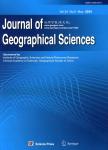Optimizing water resources allocation in the Haihe River basin under groundwater sustainability constraints
考虑地下水可持续开采约束条件的海河流域水资源优化配置(英文)作者机构:Key Laboratory of Water Cycle and Related Land Surface ProcessesInstitute of Geographic Sciences and Natural Resources ResearchCAS Department of Environmental EngineeringTechnical University of Denmark College of Resources and Environment/Sino-Danish Center for Education and ResearchUniversity of Chinese Academy of Sciences Sino-Danish Center for Education and Research
出 版 物:《Journal of Geographical Sciences》 (地理学报(英文版))
年 卷 期:2019年第29卷第6期
页 面:935-958页
核心收录:
学科分类:082802[工学-农业水土工程] 0709[理学-地质学] 081803[工学-地质工程] 08[工学] 0828[工学-农业工程] 0818[工学-地质资源与地质工程] 0704[理学-天文学]
基 金:National Key Research and Development Program of China,No.2016YFC0401402 National Natural Science Foundation of China,No.41471026
主 题:Haihe River China hydroeconomic optimization linear programming groundwater sustainability spatio-temporal economic trade-offs decision support
摘 要:This study applies a hydroeconomic optimization method for water resources management in the highly water stressed Haihe River basin. A multi-objective, multi-temporal deterministic hydroeconomic optimization model has been built to quantify the economic trade-offs and reveal minimum cost strategies when reducing groundwater abstraction to sustainable levels. A complex basin representation, with ~140,000 decision variables is formulated where each decision variable represents a flow-path from a water source to a sink. Available water sources are runoff generated by the sub-basins upstream the nine major surface water reservoirs, the inter-basin transfers from Yellow River and South to North Water Transfer Project(SNWTP) and the natural groundwater recharge to the three main groundwater aquifers. Water demands, i.e. sinks, are aggregated for each model sub-basin in categories of the major agricultural users, domestic, industrial and ecological water demands. Each demand is associated with a curtailment cost and groundwater abstraction with a pumping cost. Groundwater overdraft is constrained in each model scenario, ranging from unlimited overdraft in the plain area groundwater aquifer to sustainable abstractions over an 8-year period. Inflow upstream Yuqiao reservoir, and the inter-basin transfers from SNWTP and Yellow River are identified as the water resources with the highest increase in average shadow prices when limiting groundwater overdraft. An increase in inflow shadow prices of 37.5% indicates that these water sources will be most valuable if sustainable groundwater abstraction should be achieved. The shadow prices of water sources reveal when and where in the Haihe River basin users are curtailed if water resources are managed in the most optimal way. Average shadow prices of 1.6 yuan/m3 for all surface water sources in the sustainable abstraction scenarios shows that overdraft can be avoided by curtailment of users with a willingness-to-pay ≤1.6 yuan/m3.



